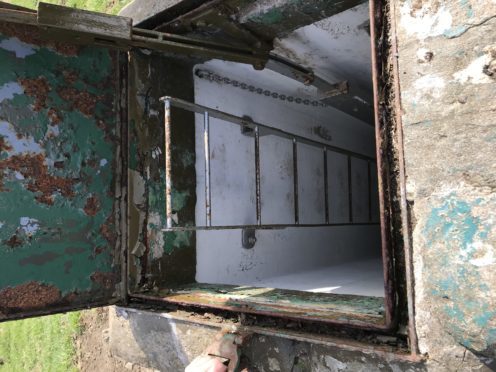A nuclear bunker built in Moray in order to protect military forces at the height of the Cold War is to be opened to the public for the first time.
Built in Cabrach during the 1960s, it was used by the Royal Observer Corps to track and identify aircraft flying over Great Britain.
And even after the Cold War thawed, the high-security installation served until 1991. Only then was it abandoned as the RAF modernised its country defence systems.
Until that point it had been in constant use and manned 24 hours, with its operational team always including three personnel who trained and rehearsed what would happen if a nuclear bomb were to have hit Moray.
Cabrach Trust Heritage Manager Peter Bye-Jensen now wants to throw a spotlight on the bunker which he says has been long-forgotten by the rest of the region.
He said: “The reason it hasn’t been opened before is simply that it has been forgotten about.
“Although it is hiding in plain sight if you know Cabrach, you wouldn’t be able to identify it if you were just passing through.”
The bunker will be open to the public for the first time as part of an open day hosted by the heritage trust on Saturday August 18.
Local historian Andy Fairgrieve will be a hosting a tour of the bunker and explaining the history behind it, including how it was once part of a network of listening stations across Scotland, designed to keep the country safe.
Other highlights of the open day include a look at the illegal whisky distilling that used to go on in Cabrach.
The heritage trust intends to build a historically accurate distillery, where members can replicate the old methods once used to make whisky as far back as the 1820s.
There will also be a Doric workshop taking place, as the area is one of the last remaining strongholds of the old Scottish dialect.
Mr Bye-Jensen is hoping that the open day will showcase just what the heritage trust are doing for the local community.
He said: “I hope the wider community of the Cabrach will turn up to see what we are doing for them and what we are doing for heritage at Cabrach.”
The open day kicks off at 10am at the War memorial cairn.
